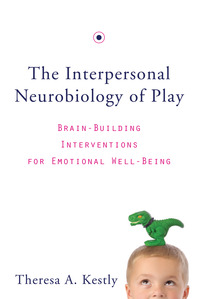
The Interpersonal Neurobiology of Play
Brain-Building Interventions for Emotional Well-Being
14 October 2014
Territory Rights — Worldwide.
Description
Nurturing brain development in children through play.
At last, clinical readers have a book that takes seriously the importance of play and brings a scientific eye to this most important aspect of life. Drawing on concepts of interpersonal neurobiology, the benefits of play interventions to achieve attunement, neural integration, healthy attachment, and the development of resilience and well-being become clear.
The book is organized into three parts. The first part lays a conceptual foundation for considering play in relation to the neurobiology of the developing brain and mind. The next part explores specific topics about play including the therapeutic playroom, the collaborative relationship between therapist and clients, storytelling, and mindfulness. The last part of the book asks questions about the state of play in our families, clinics, and schools. How did we get to a place where play has been so devalued, and what can we do about it? Now that we know how important play is across the lifespan from a scientific standpoint, what can we do to fully integrate it into our lives?
After reading this book, clinicians, teachers, and even parents will understand why play helps children (and adults) heal from painful experiences, while developing self-regulation and empathy. The clinical examples in the book show just how powerful the mind is in its natural push toward wholeness and integration.Reviews
"[A] must for anyone who works with children or young people. Therapists with an adult clientele will benefit from reading it too: our clients were all children once. . . . It can be used as a text book for teaching students of therapy and there is a section of hand-outs that could be copied and given out to students. . . . The vignettes are entertaining and we are shown how to put the theory into practice." — Contemporary Psychotherapy
"This is one of the most exciting and fascinating books on play therapy in recent years. Drawing on the groundbreaking work of two neuroscientists, Panksepp and Porges, Kestly explains in accessible language the neurobiology and healing power of play. Every play therapist, parent, and teacher will want to read this book." — David A. Crenshaw, PhD, ABPP, RPT-S, Clinical Director, Children’s Home of Poughkeepsie; Co-Editor of Creative Arts and Play Therapy for Attachment Problems
"The Interpersonal Neurobiology of Play should be required reading for all play therapists. It presents in a clear and understandable manner key neurobiology information needed by play therapists to correctly understand and treat the children they are working to help." — Helen E. Benedict, PhD, Child Clinical Psychologist, Baylor University, Waco, Texas
"In this beautifully written and highly accessible text, Theresa Kestly draws on her vast clinical experience and the latest research in neuroscience to articulate the critical role of play and relationships in children’s growth and healing. Dr. Kestly provides a clear explanation of the neurobiology behind play and play therapy, illustrating concepts meaningfully through personal case examples. This groundbreaking text is a must read for play therapists and anyone working with children. I could not put it down!" — Sue C. Bratton, PhD, Professor & Director, Center for Play Therapy, University of North Texas, Denton, Texas



